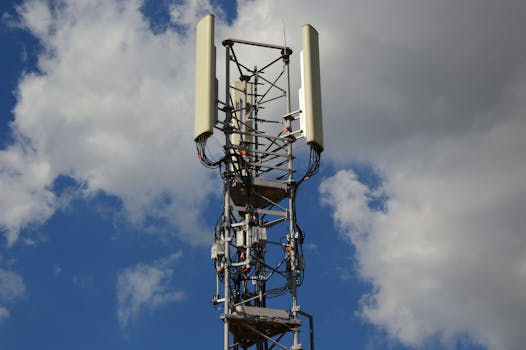
Future Trends in Mobile Network Infrastructure and Design: Next-Generation Technologies
Future trends in mobile network infrastructure and design are rapidly evolving, with next-generation technologies like 5G and 6G set to revolutionize the way we communicate and access information. The increasing demand for faster, more reliable, and more secure mobile networks is driving innovation in the field, with researchers and developers exploring new architectures, technologies, and design approaches. In this article, we will explore the current state of mobile network infrastructure and design, and examine the future trends that are shaping the industry.
Current State of Mobile Network Infrastructure and Design

The current state of mobile network infrastructure and design is characterized by the widespread adoption of 4G and 5G technologies. 4G networks, which were first introduced in the late 2000s, offer high-speed data transfer rates, low latency, and support for a wide range of mobile devices. However, as the number of mobile devices and the amount of data being transmitted continue to grow, 4G networks are becoming increasingly congested, leading to slower data transfer rates and reduced network performance. 5G networks, which are currently being rolled out in many parts of the world, offer even faster data transfer rates, lower latency, and greater support for IoT devices and other emerging technologies.
Despite the many advances of 4G and 5G networks, there are still several challenges and limitations associated with current mobile network infrastructure and design. One of the main challenges is the need for more efficient and effective use of spectrum, as the growing demand for mobile data is putting a strain on existing spectrum resources. Another challenge is the need for more secure and reliable mobile networks, as the increasing use of mobile devices for sensitive applications such as mobile banking and online shopping is creating new security risks.
Future Trends in Mobile Network Infrastructure and Design

So what are the future trends that are shaping the mobile network infrastructure and design industry? One of the most significant trends is the development of 6G networks, which are expected to offer even faster data transfer rates, lower latency, and greater support for emerging technologies such as holographic communications and tactile internet. 6G networks are still in the early stages of development, but they are expected to play a major role in shaping the future of mobile network infrastructure and design.
Another trend that is expected to have a major impact on the industry is the increasing use of artificial intelligence (AI) and machine learning (ML) in mobile network infrastructure and design. AI and ML can be used to optimize network performance, predict and prevent network outages, and improve network security. They can also be used to create more personalized and dynamic mobile networks, with network resources and services tailored to the needs of individual users.
The use of edge computing is another trend that is expected to shape the future of mobile network infrastructure and design. Edge computing involves processing data at the edge of the network, closer to the user, rather than in a centralized cloud or data center. This can help to reduce latency, improve network performance, and support the development of new applications and services such as augmented and virtual reality.
Conclusion

In conclusion, the future of mobile network infrastructure and design is rapidly evolving, with next-generation technologies like 5G and 6G set to revolutionize the way we communicate and access information. The increasing demand for faster, more reliable, and more secure mobile networks is driving innovation in the field, with researchers and developers exploring new architectures, technologies, and design approaches. As we look to the future, it is clear that mobile network infrastructure and design will play a major role in shaping the way we live, work, and communicate.



